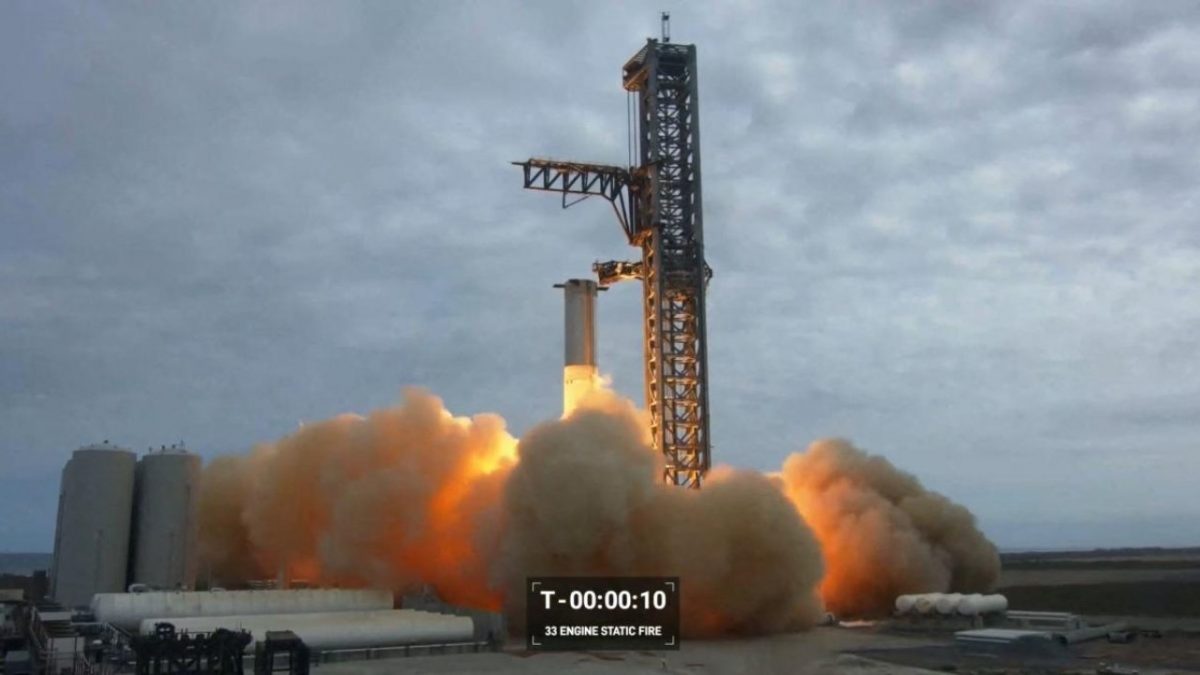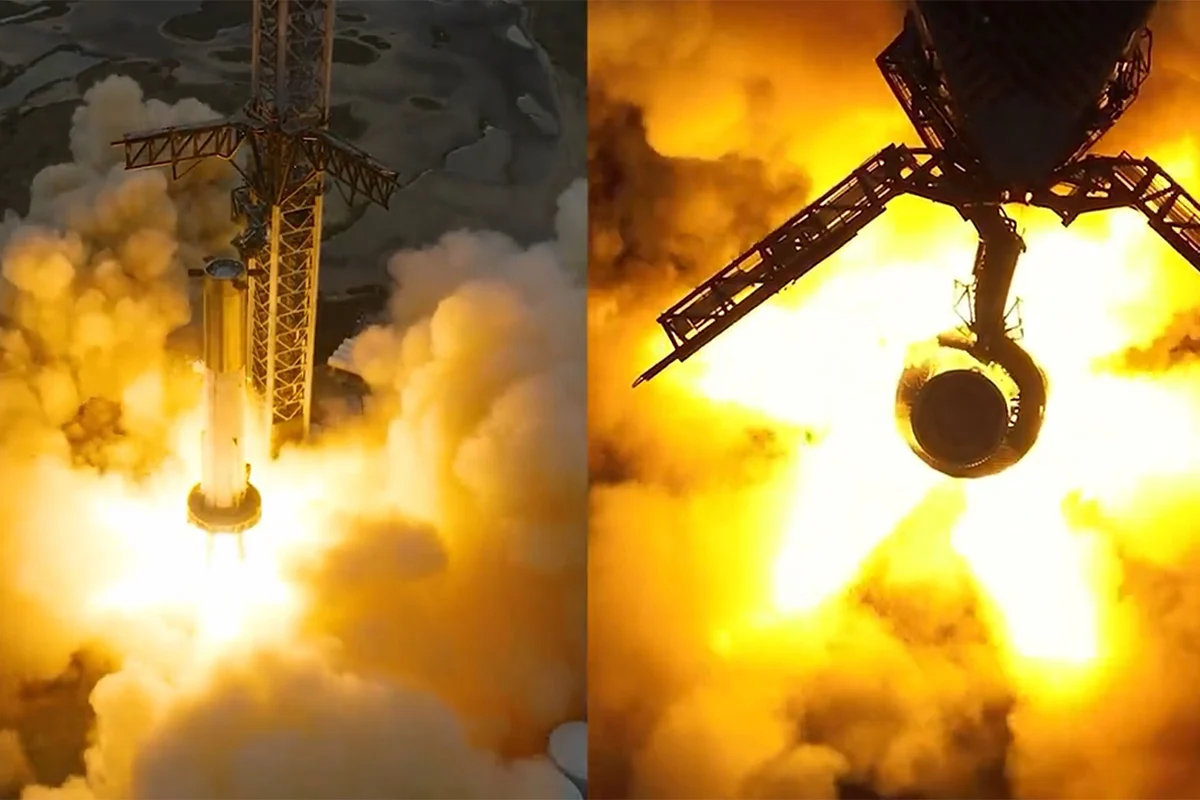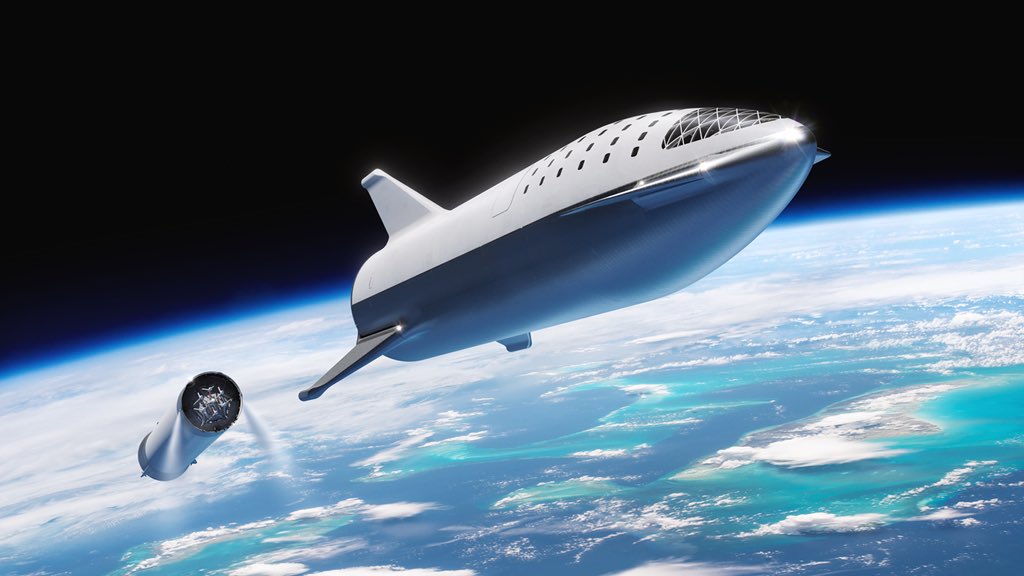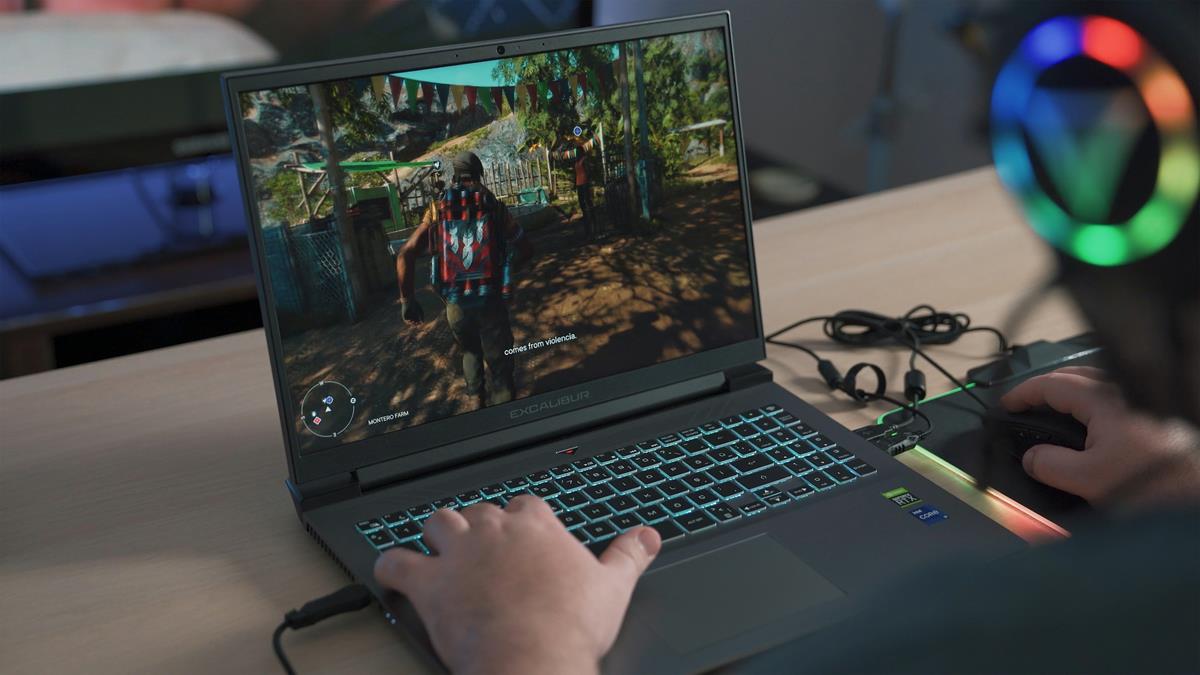SpaceX tests its pioneer Starship’s 31 engines in preparation for interplanetary travel

SpaceX recently conducted a test firing of its massive Super Heavy rocket booster by attempting to ignite all 33 engines. This trial represents the company's first 'static fire' test for what is expected to become the most powerful launch vehicle in history.

During the test, the Super Heavy booster started its engines for less than 10 seconds while it remained secured to the launchpad. The blast produced a huge cloud of smoke and dust, causing birds to fly away from the launch site. However, only 31 engines ignited, as confirmed by SpaceX CEO Elon Musk in a tweet on Thursday.
‘Team turned off 1 engine just before start & 1 stopped itself, so 31 engines fired overall, but still enough engines to reach orbit!’
The engine test was a significant milestone in the development of the Starship system, which consists of the Super Heavy booster and a spacecraft, and is intended to transport individuals and large quantities of cargo to deep space, including the moon and Mars. The test firing was conducted without the Starship spacecraft attached to the top of the booster.
The development of the Starship has been the primary focus of SpaceX's efforts at a facility named Starbase, located outside Brownsville, Texas, where Thursday's test took place. Gwynne Shotwell, the company's President and COO, referred to the test as 'a big day for SpaceX' during a conference in Washington D.C. on Wednesday.
Shotwell also mentioned that the static fire is 'the final ground test we can do before we ignite the engines and go for the first flight test.' This test, which could potentially send the Starship spacecraft into orbit for the first time, could take place 'within the next month or so,' according to her.
Related: SpaceX launched Spain’s Hispasat communications satellite mission

The company and the general public have been anticipating the orbital flight test for over a year now, as Elon Musk hinted on his Twitter account that it might take place in July 2021. It's worth mentioning that Musk has a reputation for making ambitious timeline predictions that are often not met, which is a common problem in the aerospace industry. However, SpaceX is currently still waiting for approval from the Federal Aviation Administration to proceed with the orbital flight test.
When contacted for a statement on Thursday, the FAA reiterated the same response they have been giving for some time: 'The FAA will only make a decision on the license once they are confident that SpaceX has met all necessary licensing, safety, and other regulatory requirements.'
Related: SpaceX celebrates Falcon 9’s 200th mission

In 2022, the FAA presented SpaceX with a list of 75 measures that needed to be implemented for environmental clearance. The Starship testing program, as well as the company's plans to launch from their South Texas site located near wildlife preserves, has faced strong opposition from environmental groups and local residents who have had limited access to a nearby public beach. Shotwell stated on Wednesday that 'there will always be work to do' regarding the FAA licensing process. However, she believes that once the license is obtained, the company will be ready to fly immediately.
In her comments, Shotwell acknowledged SpaceX's history of missing launch deadlines, particularly when discussing the company's goal of sending the first Starship mission to Mars.
She said, 'We're not good at predicting timelines. For sure, within this decade, we will be landing people on the moon. If not a few years from now. And then Mars? Hopefully, this decade, or maybe early next decade, maybe 2030. Let's aim for 2030.'
The Starship spacecraft will play a crucial role in NASA's Artemis moon program as well. In 2021, NASA selected SpaceX to provide a Starship vehicle for the first manned moon mission since the Apollo program.
Advertisement





















Keep dreaming.
We’ve evolved to live on this finite planet. Population 1999: 6Billion.
Population 2023: 7.6Billion. Do the maths !
Everybody thinks we’re going to go and live on any other planet and to do what, fuck that up.
Anyway if your not at least a billionaire, then you’re going nowhere.
Sorry Musk, earth is the only home.
SpaceX is a scam and waste of money.
I see also the connection of the recent Megadeth’s Album and the song “Mission To Mars” with spaceX :) i’m metalhead (;
“And then Mars? Hopefully, this decade, or maybe early next decade, maybe 2030. Let’s aim for 2030.”
1969, “a small step for man but a giant leap for mankind”
2030+, what’s greater than a giant leap?
That’ll be something, wow … but I remain skeptical with early 2030s, maybe 2039? That’d be 70 years after the moon and a party for those of us who will have lived both events :=)
This will be the best rocket ever made!